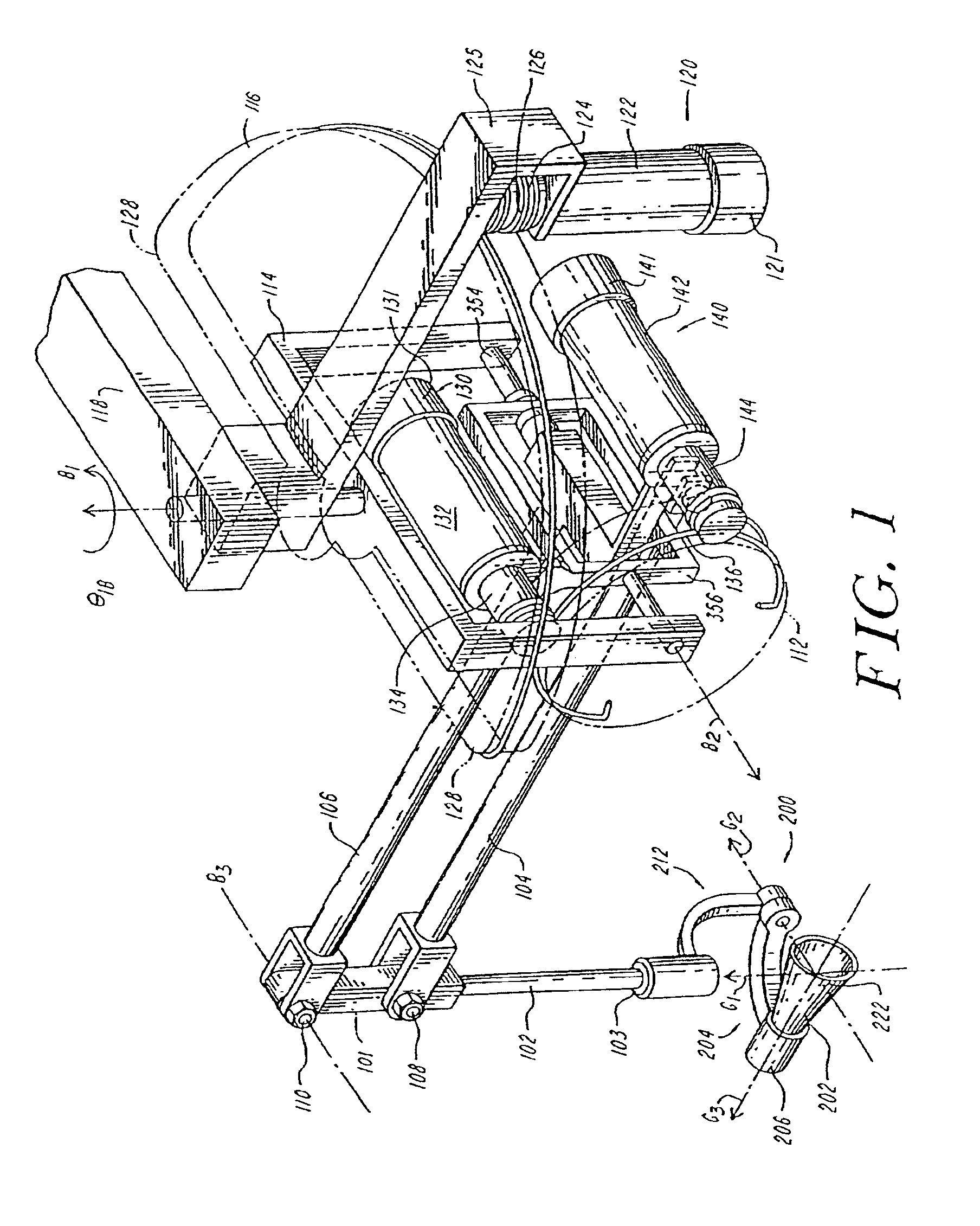Force reflecting haptic interface
a technology of haptic interface and force, applied in the field of interface, can solve the problems of user not being able to distinguish between touching a real object and touching a virtual object with the device, designing stiff, and difficult to uncouple transmissions for them, and achieves a high degree of realism, accurate perception of conditions, and facilitates high-fidelity position and torque or force feedback
- Summary
- Abstract
- Description
- Claims
- Application Information
AI Technical Summary
Benefits of technology
Problems solved by technology
Method used
Image
Examples
Embodiment Construction
The present invention includes an apparatus that can be used to interact with a “non-local” environment, either real or virtual. The virtual environment can be of a typical computer data processing type, or of a less common, more specialized type.
In one embodiment, a thimble is provided for engaging a user's finger. The thimble is supported through a linkage such that three freedoms of motion are provided for the user's finger that are totally “unpowered.” By unpowered, or “free of power”, it is meant that they are not powered, nor is there any resistance (e.g. friction or damping) to motion through these freedoms. (The status or position of motion through these unpowered freedoms may or may not be tracked. If they are not tracked, they are referred to herein as “free.”) In the same embodiment, the linkage is arranged such that three additional freedoms of motion are “powered.” By powered, it is meant that the device has the capability to resist or assist motion through these freedo...
PUM
 Login to View More
Login to View More Abstract
Description
Claims
Application Information
 Login to View More
Login to View More - R&D
- Intellectual Property
- Life Sciences
- Materials
- Tech Scout
- Unparalleled Data Quality
- Higher Quality Content
- 60% Fewer Hallucinations
Browse by: Latest US Patents, China's latest patents, Technical Efficacy Thesaurus, Application Domain, Technology Topic, Popular Technical Reports.
© 2025 PatSnap. All rights reserved.Legal|Privacy policy|Modern Slavery Act Transparency Statement|Sitemap|About US| Contact US: help@patsnap.com



